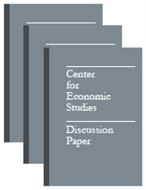Science, R&D, And Invention Potential Recharge: U.S. Evidence
Science, R&D, And Invention Potential Recharge: U.S. Evidence
Abstract
The influence of academic science on industrial R&D seems to have increased in recent years compared with the pre-World War II period. This paper outlines an approach to tracing this influence using a panel of 14 R&D performing industries from 1961-1986. The results indicate an elasticity between real R&D and indicators of stocks of academic science of about 0.6. This elasticity is significant controlling for industry effects. However, the elasticity declines from its level during the 1961-1973 subperiod, when it was 2.2, to 0.5 during the 1974-1986 subperiod. Reasons for the decline include exogenous and endogenous exhaustion of invention potential, and declining incentives to do R&D stemming from a weakening of intellectual property rights. The growth of R&D since the mid-1980s suggests a restoration of R&D incentives in still more recent times.




